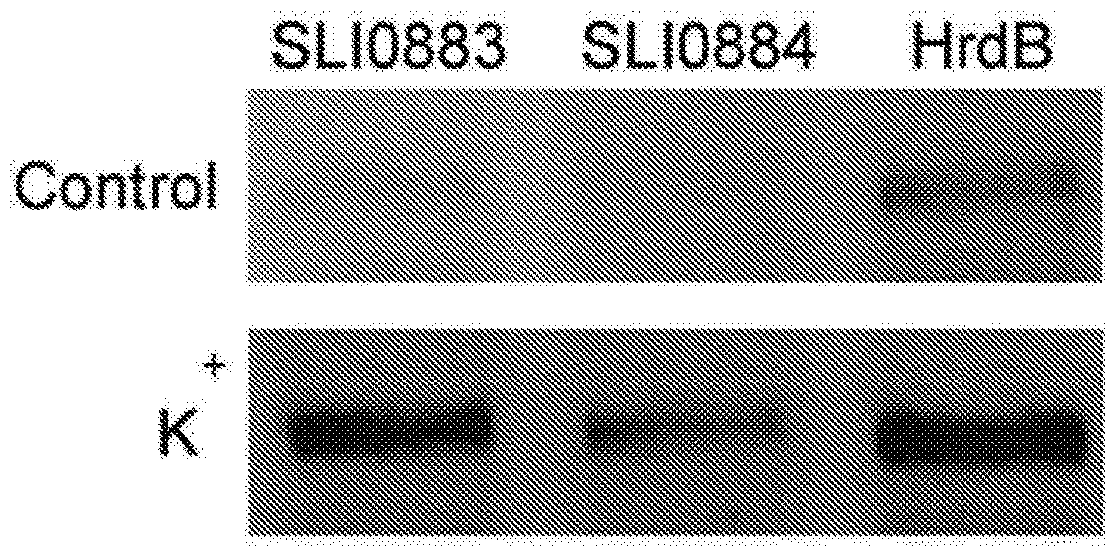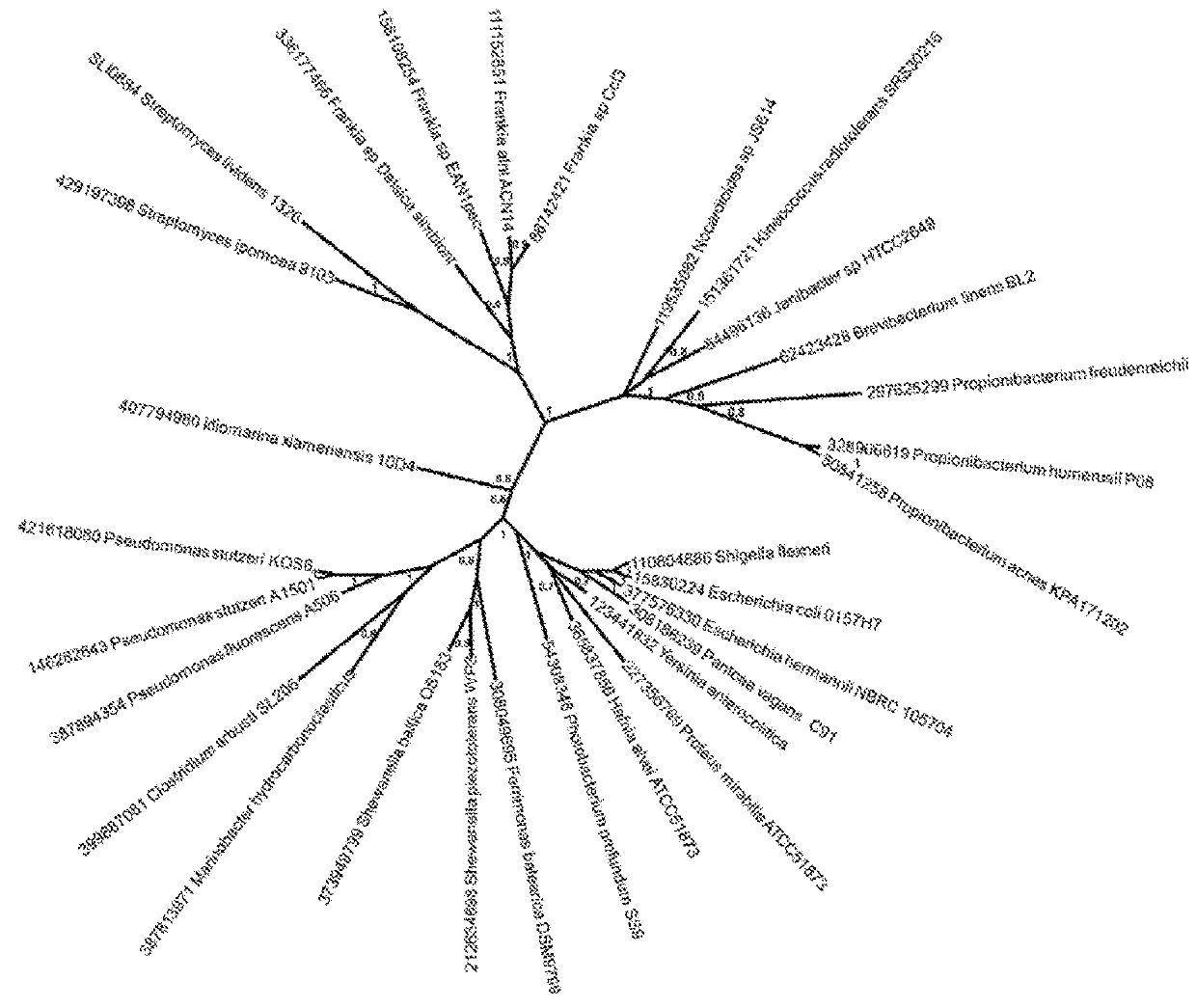Genetic system for producing a proteases inhibitor of a small peptide aldehyde type
- Summary
- Abstract
- Description
- Claims
- Application Information
AI Technical Summary
Benefits of technology
Problems solved by technology
Method used
Image
Examples
example 2
ynthesis, and Clonation of Livipeptin Biosynthetic Genes
[0077]For the heterologous production of livipeptin in E. coli, SLI0883-5 genes were cloned in pFBG, an expression vector for E. coli. This vector is regulated by the Tet system; whereby the expression of the inserts is dependent on tetracycline induction. SLI0883-5 were synthesized (GenScript). The original sequence obtained into the genome of S. lividans 66 (GenBank Accession: NZ_APVM00000000.1) was modified to introduce restriction sites in the intergenic regions to facilitate the future introduction of other genes to modify the biosynthetic pathway, whereby the synthetic construct was obtained as an insert cloned into the vector pUC57 (FIG. 17). This construct was digested with different combinations of enzymes and the ends of the insert were sequenced to confirm their identity and integrity. To sub-clone the biosynthetic livipeptin cassette, the insert was released from pUC57 by digestion with NdeI and HindIII enzymes. Thi...
example 3
ogical Methods and Culture Media
[0078]Spores of S. lividans 66 were obtained in SFM medium [33] and the biomass needed for DNA extraction and genomic sequencing was obtained in R5 medium [33]. The following media were used for producing SPA:[0079]Producing medium of livipeptin in S. lividans 66: Modified R5 medium (as described in Kieser [33]) without potassium phosphate, containing 0.2 grams of casamino acids per liter and 200 mM MgCl2 dissolved in deionized ultrafiltered water (MilliQ, Millipore).[0080]Heterologous production medium of livipeptin in E. coli: M9 Salts (solution 10×: 70 g Na2HPO4.7H2O, 30 g KH2PO4, 5 g NaCl, 10 g NH4Cl) 100 mL / Lt; MgSO4 1M=2 mL / Lt; CaCl2 1M=100 μL / Lt dissolved in deionized ultrafiltered water (MilliQ, Millipore). After autoclaving, add glucose 20%=20 mL / Lt and yeast extract=15 mL of solution at 15%. Finally, add 40 ng / mL anhydrotetracycline and 100 μg / mL ampicillin.
example 4
Extracts, HPLC-MS and Biological Activity Assays (Inhibition of Proteolytic Activity)
[0081]Fermentations were conducted with different strains; supernatants from these fermentations were obtained by centrifugation and were concentrated using a freeze dryer.
[0082]Concentrated supernatants (10×) were injected (10 μL) into an HPLC Agilent 1,200 liquid chromatograph with quaternary pump, using a diode array detector at a temperature of 25° C. For separation of sample components, we used a vydac C18 column (4.6 mm i.d.×250 mm). The mobile phase consisted of a mixture of A: TFA 0.1% (trifluoroacetic acid) and B: 100% acetonitrile, wherein the proportions of these solvents varied throughout the chromatographic run according with table 2.
TABLE 2Chromatographic run conditionsTime (minutes)solvent A %solvent B %00100406535551000
[0083]Differential fractions obtained by HPLC, were analyzed by mass spectrometry on LTQ Velos ion trap, Direct injection / ESI (Electrospray ionization), flow: 5 μl / min...
PUM
| Property | Measurement | Unit |
|---|---|---|
| Concentration | aaaaa | aaaaa |
| Biological properties | aaaaa | aaaaa |
| Inhibition | aaaaa | aaaaa |
Abstract
Description
Claims
Application Information
 Login to View More
Login to View More - R&D Engineer
- R&D Manager
- IP Professional
- Industry Leading Data Capabilities
- Powerful AI technology
- Patent DNA Extraction
Browse by: Latest US Patents, China's latest patents, Technical Efficacy Thesaurus, Application Domain, Technology Topic, Popular Technical Reports.
© 2024 PatSnap. All rights reserved.Legal|Privacy policy|Modern Slavery Act Transparency Statement|Sitemap|About US| Contact US: help@patsnap.com










